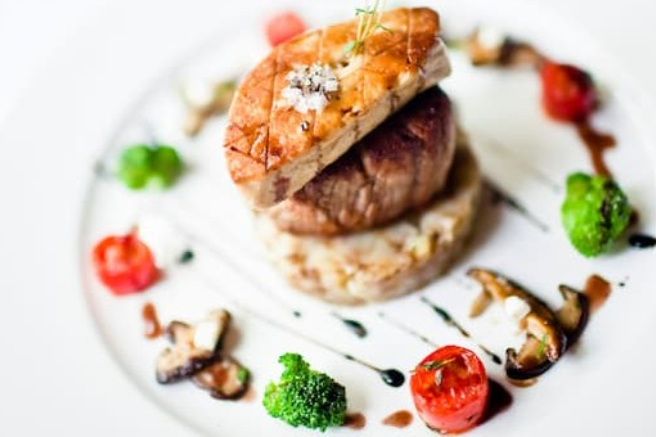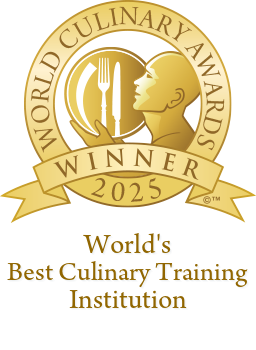Why it's helpful for your culinary career to learn modern French recipes

With 639 Michelin-starred restaurants, the highest number in any country worldwide, France is truly the home of gastronomy. Aspiring chefs seeking to distinguish themselves in the highly competitive culinary industry often turn to modern French recipes to boost their careers.
These introduce advanced techniques, new ingredients and a blend of creativity and precision that are essential in professional kitchens. Whether you are just beginning your cookery education or looking to refine your existing skills, French cooking offers a wealth of methods and knowledge that can significantly increase your expertise.
This article will explore the benefits of learning these recipes and highlight some essential dishes to master that will boost your skills and confidence in the kitchen and strengthen your applications for high-level culinary careers.
The global allure of French cuisine
Cookery in France is renowned for its rich history, meticulous methods and diverse regional specialties.
From delicate macarons to hearty dishes such as coq au vin, French gastronomy exemplifies precision and tradition.
Each region contributes distinct flavors: Provence offers aromatic herbs in recipes such as ratatouille, while Normandy favors creamy sauces in classics such as moules marinières.
The emphasis on quality ingredients, such as Périgord truffles or Roquefort cheese, elevates the country’s cuisine to unparalleled heights.
Top chefs of the world, such as Georges Auguste Escoffier and Paul Bocuse, revolutionized contemporary French cooking techniques, leaving a mark on aspiring and professional cooks worldwide.
Institutions such as École Ducasse, under the guidance of celebrated chef Alain Ducasse, uphold these benchmarks, ensuring the continuity of culinary excellence across the globe.
The benefits of learning modern French recipes
Mastering these kinds of dishes will introduce you to rich flavors and techniques that reflect contemporary food trends and offer fresh perspectives on traditional recipes.
Some of the advantages of learning French culinary dishes include:
-
Innovation: encourages creative techniques and presentation, inspiring chefs to develop new dishes such as a deconstructed ratatouille, which reimagines traditional flavors in a novel form
-
Technical mastery: demands precision and proficiency in fundamental techniques. For example, perfecting the art of making a soufflé can significantly improve a chef's overall competence and confidence
-
Ingredient knowledge: understanding the use of high-quality, often seasonal food in French recipes boosts a chef's ability to create balanced and flavorful dishes, such as a spring vegetable terrine that highlights fresh produce
-
Culinary tradition: French cuisine has a rich heritage that provides a deep source of knowledge and inspiration. For instance, exploring the history and preparation of coq au vin offers a well-rounded culinary perspective
-
Aesthetic appeal: the importance of presentation helps chefs create visually stunning plates, such as a beautifully presented mille-feuille, that will appeal to diners
-
Gastronomic influence: French cuisine has profoundly influenced global culinary practices. Learning to make classic sauces such as béchamel or hollandaise provides insights into a variety of international cooking styles
-
Marketability: expertise can increase a chef's appeal in the job market. For instance, mastering a dish such as duck à l'orange is highly valued in many fine dining establishments
-
Refinement: these modern recipes help chefs develop a more refined palate, allowing them to better understand and balance complex flavors
-
Professional growth: continual learning and adapting to modern trends in French cuisine contribute to a chef's ongoing development and success
-
Customer satisfaction: ability to deliver classic French dishes can significantly improve the dining experience, leading to higher customer satisfaction. A well-executed simple dish such as crème brûlée often leaves a lasting impression on diners.
Studying for a culinary arts degree with a world-renowned school will help you maximize the benefits of learning traditional French cuisine.

Key modern French dishes
For those passionate about this cuisine, learning contemporary dishes is essential. Let’s look at some examples of modern French recipes to master.
Sous-vide duck breast
Duck breast is meticulously seasoned and vacuum-sealed before cooking in a water bath at precise temperatures. This sous-vide method ensures the meat is tender and retains its natural juices.
Once cooked, the duck breast is seared briefly to achieve a crispy skin, then served alongside a reduction of red wine and blackberry jus.
The sauce adds a sweet-tart contrast to the rich, savory meat, creating a balanced and elegant meal.
Quinoa stuffed peppers
This dish is a contemporary take on stuffed peppers and is filled with a flavorful mixture of quinoa, goat’s cheese and roasted vegetables.
The quinoa adds a nutty texture, while the goat’s cheese provides a creamy element that complements the peppers' sweetness.
The meal is elevated with a drizzle of basil-infused olive oil, boosting its freshness and herbaceous notes.
Seared scallop salad
Fresh scallops are quickly seared to develop a caramelized exterior while keeping the interior tender and delicate.
They are served atop a bed of mixed greens, which provide a crisp contrast to the buttery meat.
A citrus vinaigrette made with lemon juice, olive oil and a hint of Dijon mustard adds brightness and acidity to the salad, heightening the seafood flavors without overpowering them.
Confit de canard burger
Inspired by traditional French cuisine, this gourmet burger features a duck-leg confit, where the legs are slow-cooked in their own fat until tender.
The shredded confit is then piled onto a toasted brioche bun and topped with caramelized onions and a truffle aioli.
The combination of savory duck, sweet onions and earthy truffle creates a decadent experience that marries classic flavors with casual dining appeal.
Ratatouille tart
This recipe showcases the tastes of Provence with layers of thinly sliced zucchini, eggplant and tomatoes arranged meticulously on a crisp pastry base.
The vegetables are gently roasted beforehand to bring out their sweetness and then baked in the tart with a drizzle of herb-infused olive oil.
The result is a visually stunning dish with a harmonious blend of textures and a burst of Mediterranean flavors.
Foie gras macarons
A sophisticated appetizer or small bite, this dish features delicate almond shells filled with a creamy foie gras mousse.
The sweetness of the macaron shell balances the rich, buttery foie gras, creating a luxurious miniature indulgence that is savory and sweet.
Foie gras macarons exemplify the creativity and elegance often found in modern interpretations of French cuisine.
Lobster bisque with tarragon
This dish is rich with the addition of fresh tarragon, which infuses the soup with subtle hints of anise and herbaceous notes.
The bisque is made by simmering lobster shells and vegetables in a rich seafood stock, then pureeing and straining for a smooth texture.
A dollop of crème fraîche adds creaminess and richness, making this a luxurious starter that embodies the depth and refinement of French culinary traditions.
Pistachio financier
A modern take on the traditional French almond cake, known as a financier.
The classic nutty base is reimagined with pistachios, giving it a vibrant green color and a distinct, rich flavor. This cake is often topped with a silky matcha ganache, which adds a subtle bitterness and an earthy depth to the dessert.
This combination of French technique and Asian flavors creates a unique and visually striking dessert, often garnished with edible flowers or a dusting of powdered sugar, making it a standout in contemporary French patisseries.
Cherry clafoutis
Originating from the Limousin region of France, this dessert features fresh cherries baked in a custard-like batter made with eggs, sugar, flour and milk that creates a pudding-like texture that envelops the juicy fruit.
Served warm, the clafoutis is dusted with powdered sugar and often accompanied by a dollop of whipped cream or a scoop of vanilla ice cream, making it a comforting and indulgent finale to a meal.
Mille-feuille with berries
Literally translating to ‘a thousand layers,’ this dessert consists of crisp, flaky puff pastry layered with vanilla pastry cream and fresh seasonal berries.
The pastry is baked to achieve layers of delicate, buttery goodness that provide a contrast in texture to the smooth cream and juicy fruit.
The dish is finished with a dusting of powdered sugar, highlighting its elegant presentation and the interplay of flavors and textures.
Career paths in French cuisine
There are many roles available for those seeking a job in this culinary area and each demands distinct skills and expertise, making it an exciting option for passionate individuals.
Some careers you could consider are:
-
Chef de partie: responsible for a specific kitchen section, demonstrating preparation and presentation skills, especially vital in Michelin-starred environments
-
Sommelier: expert in wine and beverage pairings, curating lists that complement French dishes
-
Patissier: focused on pastry-making, crafting exquisite desserts that reflect French culinary traditions, from delicate macarons to intricate wedding cakes
-
Maître d'hôtel: ensuring seamless experiences by overseeing dining room operations and ambiance, providing personalized service
-
Fromager: curating artisanal cheese selections that complement wine and cuisine, with expertise in aging processes and regional variations
-
Chocolatier: creating decadent treats using fine French chocolate and techniques including tempering to molding
-
Culinary educator: passing on traditions and techniques to aspiring chefs in culinary schools or workshops
-
Restaurant manager: overseeing daily operations, ensuring quality and efficiency in service delivery and strategic planning
How can you pursue a career in French cuisine?
If you're an aspiring chef wanting to specialize in this area of the culinary arts, you can kickstart your career by enrolling in a reputable cookery school that offers a specialized curriculum in French cuisine.
These programs immerse students in intensive coursework and practical sessions, providing comprehensive knowledge of French cooking techniques, kitchen management and food science.
Leading culinary schools offer a range of options, from workshops to advanced culinary arts degrees, baking and pastry arts and culinary science, guided by industry-renowned chefs.
Internships and apprenticeships are essential for hands-on experience in professional kitchens, particularly in French restaurants, where students learn directly from skilled chefs.
These opportunities help people refine their cooking skills and understand the nuances of French cuisine in authentic settings.
By taking such positions, students polish their techniques and build networks that can lead to future career prospects.
Certain French culinary institutes offer structured apprenticeship programs that blend classroom education with practical training, ensuring a well-rounded education.
Conclusion
Learning modern French recipes offers aspiring chefs a gateway to excellence and career advancement.
Beyond its gastronomic appeal, studying the French culinary arts equips cooks with precision and creativity skills essential for thriving in competitive kitchens worldwide.
The emphasis on mastering techniques, artful presentation and seasonal ingredients boosts adaptability and establishes a universal language in professional kitchens.
Proficiency in French cuisine also opens doors to prestigious positions, from executive chef roles to specialized jobs such as patissier or sommelier.
Enrolling in a renowned cookery school is key for those aspiring to excel in this kind of culinary career.


